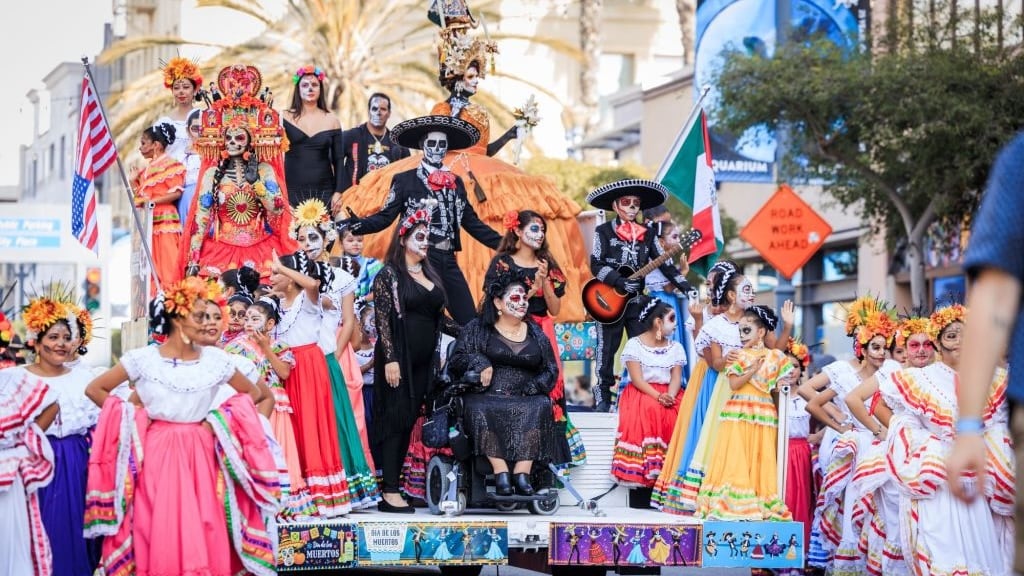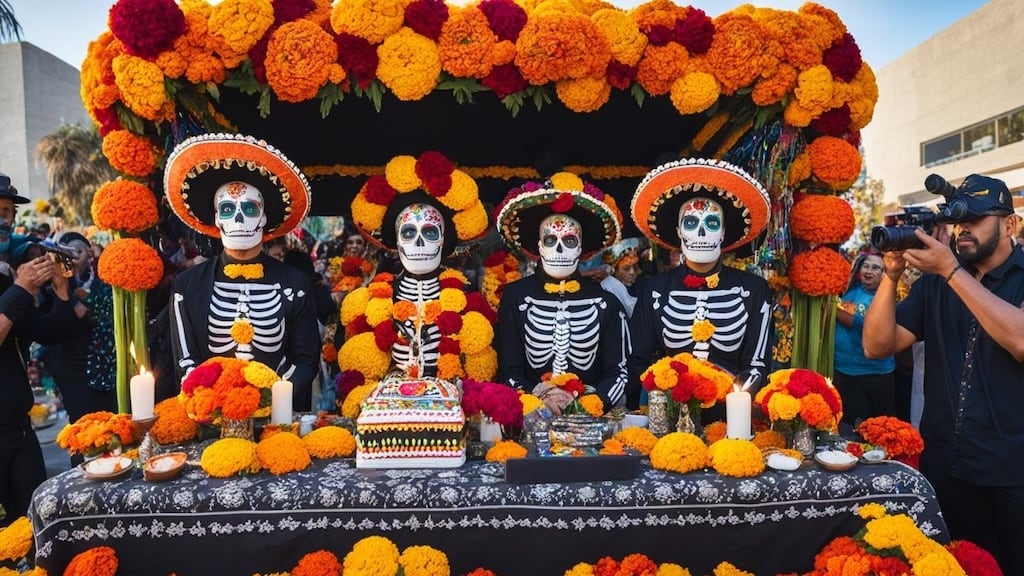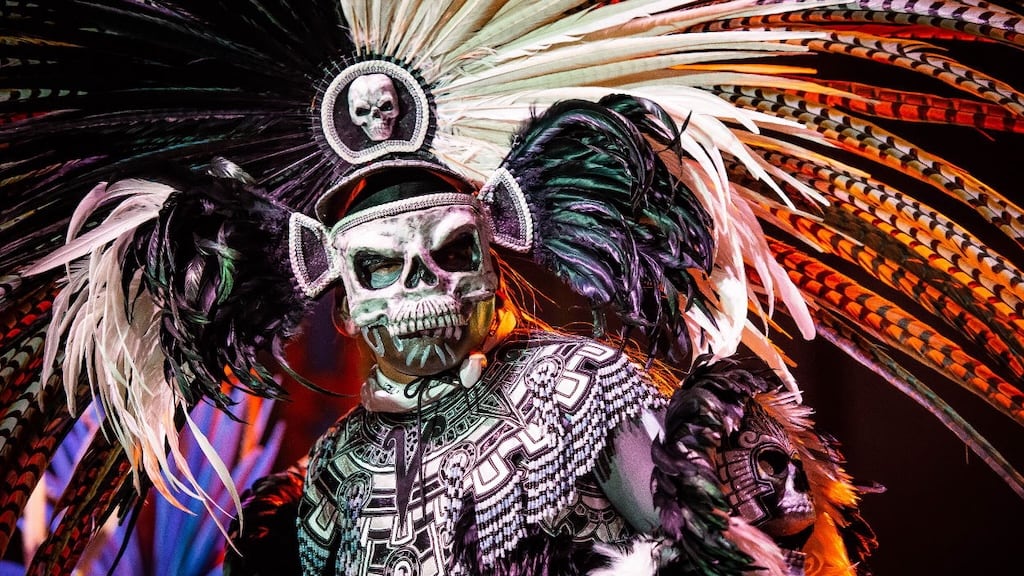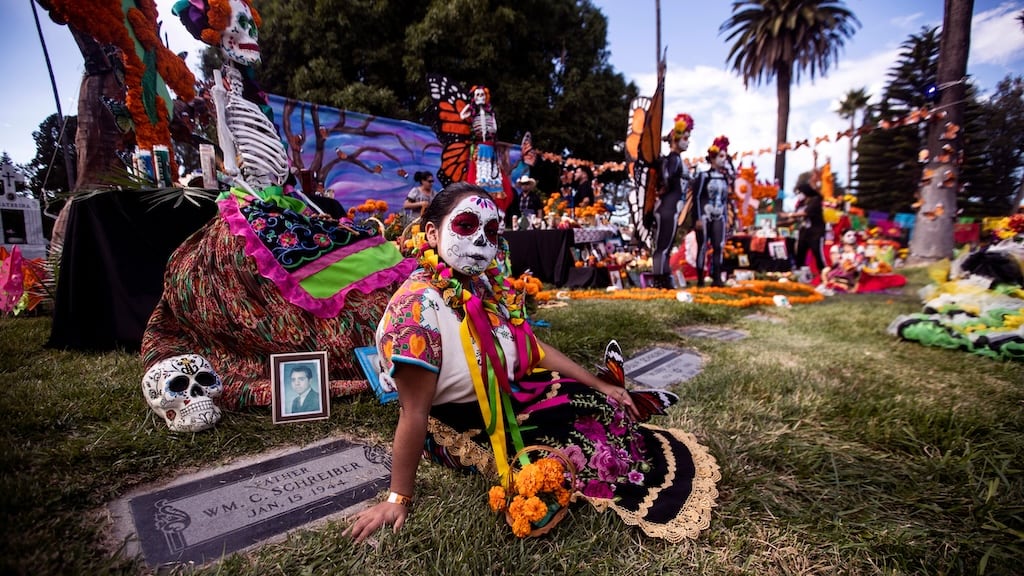Los Angeles Day of the Dead Parade
The Los Angeles Day of the Dead Parade is not simply a cultural spectacle but a deeply felt ritual, a walking art gallery, and a common ground where thousands come together to pay tribute to the memory of loved ones.
Although grounded in Mexican tradition, the celebration has found an affectionate home in LA, with the city's Latinx heritage and artistic vibe conspiring to take it to new heights as one of North America's most visually arresting cultural parades. The celebration is both a moving and exuberant experience that captures the rich spirit of remembrance, community, and creativity.


Historical Background
While Día de los Muertos is derived from ancient Mesoamerican cultures—most notably the Aztecs—it has evolved through centuries of cultural and religious syncretism. Spanish colonization brought Catholic observances such as All Saints' Day and All Souls' Day, which fused with indigenous practices to form the rich, symbolic tradition we know today.
In Los Angeles, where Mexican-American culture thrives, the tradition began modestly in the 1970s with local altars and small-scale processions in Olvera Street. These events gradually expanded with the support of grassroots cultural activists, city authorities, and artists. By the early 2000s, the LA Day of the Dead Parade had blossomed into a nationally acclaimed celebration recognized for its visual splendor and authenticity.
Normal Activities
Visitors to the Los Angeles Day of the Dead Parade can expect a full immersion in sensory and symbolic experiences:
- Intricate Floats showcasing themes of death and rebirth with skeletons, saints, and folklore
- Giant Puppets, especially depictions of La Catrina, the iconic elegant skeleton woman
- Live Music performances from traditional mariachis to contemporary Latin artists
- Cultural Dances by Aztec and folklórico troupes
- Face Painting Stations offering calavera (skull) designs to join the spirit of the event
- Market Stalls selling marigolds, candles, sugar skulls, and pan de muerto
- Interactive Installations like luminous altars and traveling memorial carts
Traditional Customs
The soul of the parade lies in the living traditions passed down and enriched each year:
Ofrendas (Altars)
Throughout the route and cultural landmarks, elaborately crafted ofrendas honor deceased loved ones. These include:
- Candles and marigolds (cempasúchil) believed to guide spirits
- Photos, food, and keepsakes
- Papel picado, colorful perforated paper that adds spiritual vibrancy
Food and Drink
Aromatic dishes play an integral role:
- Pan de muerto
- Tamales, mole, and champurrado
- Sugar skull candies in all shapes and colors
Local restaurants often curate Day of the Dead-themed menus for the celebration.
Music and Costume
Participants wear embroidered garments and skeletal makeup, blending reverence with creativity. The result is a surreal atmosphere where living and spiritual traditions intermingle.
Symbolic Elements
- Marigold petals line the streets to guide spirits
- Incense and candles are used to welcome the departed
- Altars and prayers offer messages of remembrance and love
What to Expect
If you're a first-time attendee, here's how to prepare:
- 📅 Date & Time: November 2nd, from 4 PM until late
- 📍 Location: Typically begins at Olvera Street or Grand Park
- 🎟️ Admission: Free
- 👀 Best Viewing Areas: Spring Street and Temple Avenue
- ♿ Accessibility: Parade is wheelchair accessible, including public altars
- 🚇 Transport: Use LA Metro to avoid congestion and roadblocks
- 🎭 Dress Code: Traditional makeup and festive attire encouraged, but respect the cultural significance


Conclusion
The Los Angeles Day of the Dead Parade is more than a spectacle—it is an emotional, spiritual, and cultural connection between the living and the dead.
Born from ancient traditions and infused with LA's modern multicultural energy, this celebration has become one of North America's most heartfelt cultural experiences. Whether you're drawn by the visuals, the customs, or the spirit of remembrance, the event leaves a lasting impression as a celebration of life and memory that never fades.